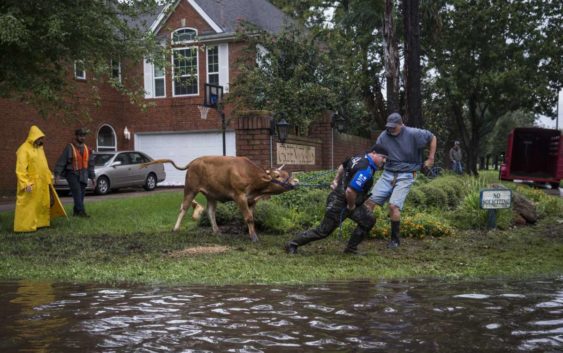- Charlotte-based marketing agency announces $20,000 Creative Campaign Grant to help communities after Hurricane Helene
- Artists transform hurricane aftermath into hoop-inspired masterpieces at Charlotte exhibit
- NC's cost for Hurricane Helene damage is nearly $60 billion, state says
- State to develop drone program to better respond to disasters like Helene, Florence
- South Carolina residents face deadline to get storm debris out to the curb after Hurricane Helene
What Texas residents need know about Tropical Storm Nicholas

In a hurricane season that has caused a considerable portion of New Orleans to be without power for weeks and New York City to flood like never before, the latest named storm could bring devastation to Texas.
Tropical Storm Nicholas is making its way toward the Lone Star State, and is expected to make landfall late Monday. While weather experts are tracking Nicholas and sending out updates every hour, here’s what to expect in the hours to come.
How bad is this storm?
The storm strengthened as recently as Monday afternoon, leading experts to say Nicholas could land in Texas as a hurricane. Regardless of its classification, Nicholas remains a large storm that is projecting winds up to 115 miles.
Nicholas is expected to move north before slowing over Houston on Tuesday, the National Hurricane Center predicts.
Just before 4 p.m. on Monday, the NHC announced that Nicholas was about 70 miles southeast of Port Aransas in the Gulf of Mexico. Winds are already reaching 60 miles per hour, according to the organization.
Should I prepare for the bad weather?
If Nicholas’ strength remains and hits Texas as a hurricane, parts of the Gulf Coast could receive up to 20 inches of rain. According to the Associated Press, these areas would include those hit by 2017’s Hurricane Harvey.
The Gulf Coast remains under a tropical storm warning. Even without the hurricane distinction, residents along the Texas coast, including Corpus Christi and Houston, and in southwestern Louisiana, should prepare for a potential “life-threatening storm surge” and isolated tornadoes. A hurricane watch is currently in effect from Port Aransas to San Luis Pass.
Gov. Greg Abbott said rescue teams and resources are in place to help residents in the Houston area and along the coast. Houston has already seen some rain Monday, though barricades are already in place and high-water rescue vehicles at the ready. Houston Mayor Sylvester Turner has advised residents to stay off the roads and keep up with the latest weather reports.
How is the bad weather impacting everyday operations?
Though it was business as usual for students on Monday, Houston ISD has canceled classes on Tuesday. Multiple schools in the Houston area and down the coast have opted out of classes over Monday and Tuesday. Texas A&M University-Corpus Christi, Texas A&M-Kingsville, and Del Mar College have also announced closures.
The weather is also serious enough for COVID-19 testing and vaccinations sites in Harris County, Fort Bend County, and Nueces County to be closed. Nueces County, which includes Corpus Christi, has also temporarily closed roads offering beach access.
COVID-19 testing and vaccination sites were closed in Harris County, which includes Houston; Fort Bend County, southwest of Houston; and Nueces County, which includes Corpus Christi.
Search and rescue crews wrestle a stray steer to try and put it in a trailer in a flooded neighborhood in Houston, Aug. 29, 2017 after Hurricane Harvey dumped record amounts of rain on the region.
ANDREW BURTON /NYTHow will Nicholas impact the San Antonio area?
While the Gulf Coast is expected to be most directly impacted by Nicholas, the storm is expected to bring rain across coastal areas in middle and upper Texas throughout the week. In Bexar, Comal, Guadalupe, Medina, and other Central Texas counties, the worst of Nicholas’ effects are expected Monday.
There’s a considerable chance for thunderstorms across the area Monday afternoon and evening, though the likelihood of such drops dramatically by Tuesday afternoon. The remainder of the week is expected to be sunny and clear skies, but the forecast shows a low chance for storms on Wednesday and Friday.
Residents in DeWitt and Lavaca counties, and perhaps even Karnes, Gonzales, and Fayette, may see wind gusts reaching 40 to 50 miles per hour and between one to three inches of rain Monday night or Tuesday morning.
Weather experts say a shift westward for the storm would mean even more rainfall for inland Texas.
Read more from Sarah